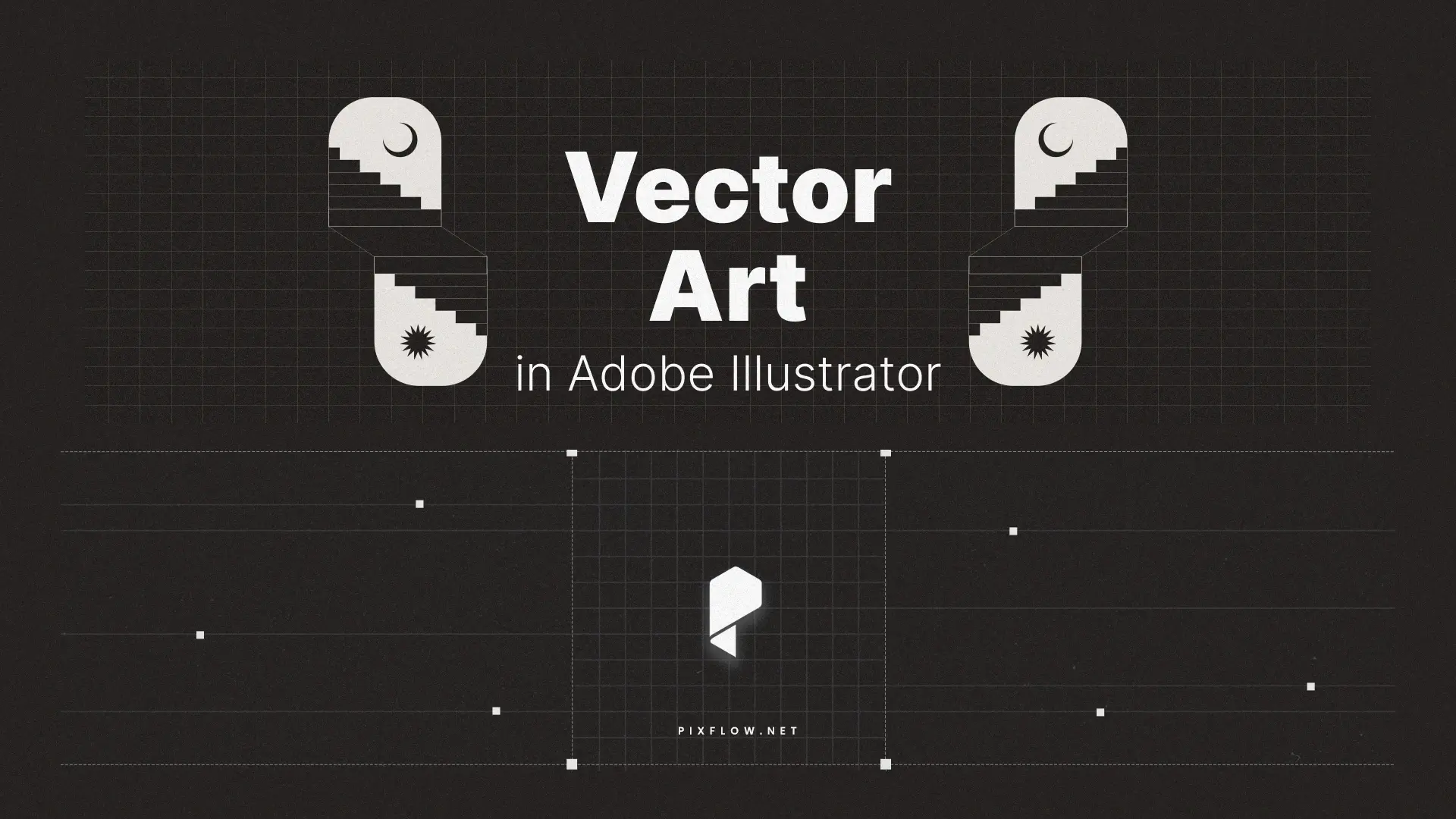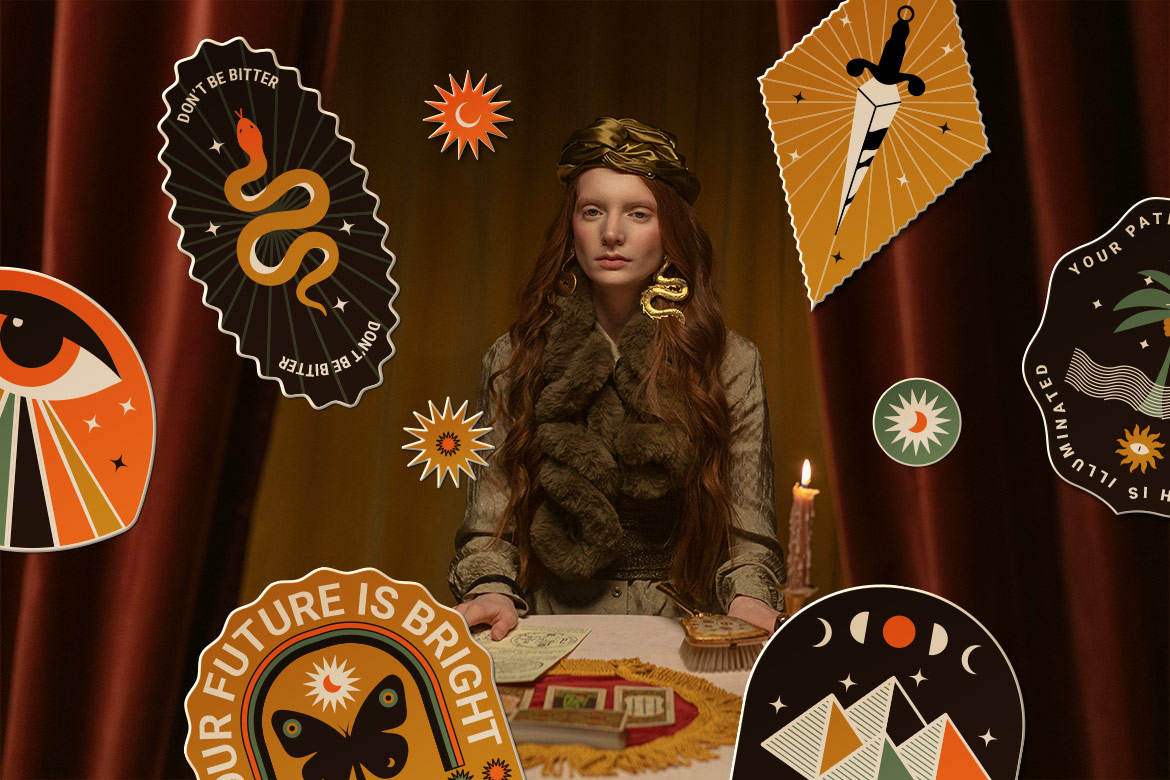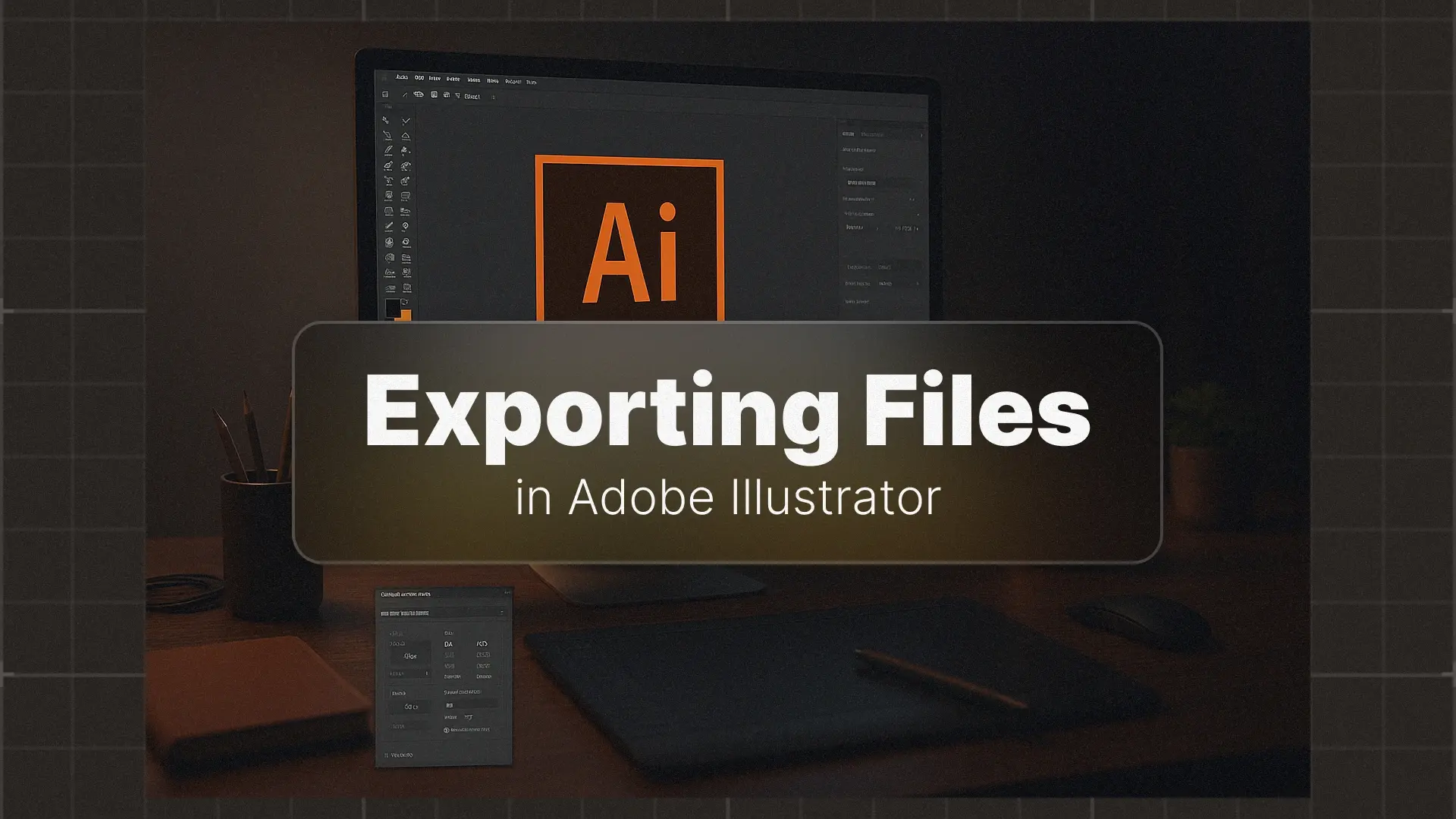Creating Vector Art in Illustrator: A Complete Beginner’s Guide

Vector Art
This guide is the ultimate vector illustration tutorial for aspiring artists. Whether you’re looking to craft your first character or master line art in Illustrator, we’ll walk you through every essential step. By the end, you’ll understand how to create vector art in Adobe Illustrator using the platform’s most powerful tools. You can also check out the professional Illustrator templates of Pixflow here.
Professional Illustrator Templates
Understanding Vector Graphics
What Makes Vector Art Special?
At the core of every Illustrator project are vector paths, anchor points, and bézier curves. These elements define your shapes and lines mathematically, rather than pixel by pixel, allowing for infinite scalability without sacrificing quality.
This is why Adobe Illustrator vector graphics are essential for logos, posters, UI assets, and more. Whether you’re designing for a smartphone screen or a highway billboard, your artwork will always remain sharp and precise.
Setting Up Your Artboard for Illustration
Before you start drawing, it’s important to set up your file correctly:
- Document Size: Choose dimensions suited to your project.
- Use RGB for digital work (web, apps, etc.).
- Use CMYK for print projects (posters, business cards, etc.).
- Essential Panels for Illustrator Drawing:
- Layers Panel: Organize and lock elements.
- Pathfinder Panel: Combine or divide shapes.
- Appearance Panel: Manage strokes, fills, and effects.
Need inspiration to get started? Browse high-quality Illustrator vector templates here.
Mastering the Essential Illustrator Drawing Tools
The Pen Tool: Your Key to Precision
The Pen Tool is the cornerstone of vector art in Adobe Illustrator. With it, you can draw clean, precise lines and shapes by placing anchor points and controlling curves with direction handles.
If you’re new to vector art, spend time doing Adobe Illustrator Pen Tool practice exercises—like tracing over basic shapes and letters—to build your muscle memory.
Pro Tip: Use Shift while drawing to constrain angles to 45° increments for cleaner geometry.
The Pencil and Brush Tools for Freehand Drawing
If you prefer a looser, more organic style, the Pencil Tool lets you sketch freely. Adjust smoothing levels for more control over your lines.
For artistic flair, the Brush Tool offers an array of styles—from ink-like strokes to textured paint effects. Customize brushes or import new ones to make your Adobe Illustrator drawings stand out.
The Shape Builder Tool for Complex Forms
Rather than drawing everything with the Pen Tool, try building shapes with simple geometry:
- Draw overlapping circles, squares, or polygons.
- Select them and use the Shape Builder Tool (Shift + M).
- Click and drag to merge, subtract, or divide paths.
This speeds up your workflow and helps in creating characters in Illustrator with clean, efficient vector paths.
How to Turn a Picture into Vector Art
Step 1: Placing and Preparing Your Image
- Import your image: File > Place
- Scale and position it on your artboard.
- Lock the image layer to avoid accidental movement.
- Create a new layer above it to start tracing.
This is ideal for character design or converting a sketch into a vector illustration.
Step 2: Tracing with the Pen Tool
- Begin tracing the outline of the image using the Pen Tool.
- Break down the subject into simple shapes: head, body, limbs, details.
- Use curves for smooth lines and corners for definition.
This step is great for practicing line art in Illustrator, especially if you’re learning how to draw people in Adobe Illustrator.
Step 3: Adding Color and Detail
Once your outline is complete:
- Use the Live Paint Bucket (K) for fast coloring.
- Or manually apply colors with the Swatches Panel.
- Add shading, highlights, and texture using grain effects or vector textures.
For depth and realism, explore how to add texture to vector art in Illustrator with pattern overlays or effects like “Grain” and “Scribble.”
Want vector art assets that you can customize instantly? Check out Pixflow’s Illustrator templates for ready-to-edit scenes and characters.
Exploring Popular Vector Illustration Styles
Creating Flat Design Characters
Flat design is a minimalistic approach to illustration using simple shapes and bold colors. It’s ideal for icons, web characters, and explainer videos.
Tips for success:
- Keep shapes geometric.
- Minimize gradients or textures.
- Use high contrast and solid fills.
Introduction to Isometric Illustration
Isometric illustrations offer a 3D perspective using a 2D plane. To begin:
- Go to View > Perspective Grid > Hide Grid.
- Instead, create a custom isometric grid using a 30° angle guide.
- Use the Shear Tool and Transform Panel to align elements.
Whether you’re building cities or devices, creating isometric art in Adobe Illustrator helps tell visual stories with depth and structure.
Conclusion
The best way to improve is by doing. Grab a reference image, open Illustrator, and start tracing or sketching your next masterpiece. And if you’re looking for quality assets to speed up your workflow, don’t miss the curated collection of vector templates here.
For a more in-depth journey into Illustrator, check out our full guide: Mastering Adobe Illustrator: A Comprehensive Guide.
Disclaimer : If you buy something through our links, we may earn an affiliate commission or have a sponsored relationship with the brand, at no cost to you. We recommend only products we genuinely like. Thank you so much.







